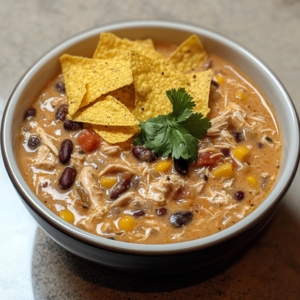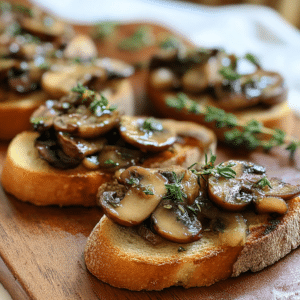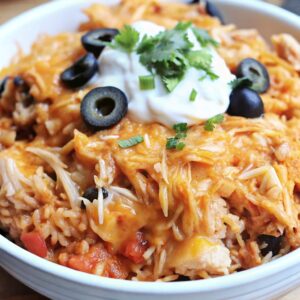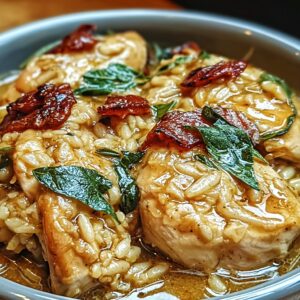Jump to:
The Ultimate Vegetarian Pad Thai Recipe
This vegetarian pad thai brings authentic Thai flavors to your kitchen with plant-based ingredients that don’t compromise on taste. Packed with colorful vegetables, protein-rich tofu, and a perfectly balanced sweet-tangy sauce, this dish delivers restaurant-quality results in just 30 minutes. Whether you’re hosting a family dinner or craving something healthy yet satisfying, this recipe offers incredible nutritional benefits while keeping costs under $15 for four servings.
Why You'll Love This Recipe
- Ready in just 30 minutes making it perfect for busy weeknight dinners when you need something quick and nutritious
- Budget-friendly at approximately $3.50 per serving while delivering restaurant-quality flavors and satisfaction
- Packed with plant-based protein from tofu and essential vitamins from fresh vegetables like bell peppers and carrots
- Completely customizable allowing you to adjust spice levels and swap vegetables based on your preferences or what’s in season
- Naturally dairy-free and easily made gluten-free by using tamari instead of soy sauce, accommodating various dietary needs
Why This Vegetarian Pad Thai Recipe Works
This recipe succeeds because it balances the five essential Thai flavors: sweet, sour, salty, spicy, and umami. The tamarind paste provides authentic sourness while brown sugar adds natural sweetness. Soy sauce delivers the salty element, and chili powder brings controlled heat.
The key lies in proper timing and temperature control. By cooking tofu first until golden, you create a crispy exterior that holds up during mixing. Adding vegetables in stages ensures each ingredient maintains its ideal texture – peppers stay crisp while carrots soften slightly.
Using the right noodle preparation technique prevents mushiness. Soaking rice noodles in hot water rather than boiling them gives you better control over the final texture, ensuring they remain firm yet tender.

What You’ll Need for Perfect Vegetarian Pad Thai
Ingredients
| Ingredient | Quantity (approx) | Purpose / Notes |
|---|---|---|
| Rice noodles | 8 oz | Base of the dish, provides texture and absorbs flavors |
| Firm tofu | 1 cup, cubed | Main protein source, adds substance and texture |
| Bell peppers | 1 cup, sliced | Adds crunch, color, and vitamin C |
| Carrots | 1 cup, julienned | Natural sweetness and beta-carotene |
| Green onions | ½ cup, chopped | Fresh flavor and visual appeal |
| Tamarind paste | 3 tbsp | Authentic sour flavor, essential for traditional taste |
| Low-sodium soy sauce | 3 tbsp | Umami and saltiness without excess sodium |
| Lime juice | 2 tbsp, fresh | Bright acidity and fresh citrus notes |
| Brown sugar | 2 tbsp | Balances sourness with natural sweetness |
| Chili powder | 1 tsp | Heat level, adjust to preference |
| Peanuts | ¼ cup, chopped | Crunch and healthy fats |
| Bean sprouts | 1 cup | Fresh crunch and traditional texture |
Tools
| Tool | Purpose |
|---|---|
| Large mixing bowl | Soaking noodles and mixing sauce ingredients |
| Large pan or wok | High-heat cooking and proper stir-frying technique |
| Sharp knife | Precise vegetable cutting for even cooking |
| Cutting board | Safe food preparation surface |
| Whisk | Combining sauce ingredients smoothly |
| Measuring cups and spoons | Accurate ingredient proportions |
How to Make Vegetarian Pad Thai
| Step | Instructions |
|---|---|
| 1. Prepare Noodles | Soak rice noodles in hot water for 15 minutes until soft but still firm. Drain thoroughly and set aside. |
| 2. Cook Tofu | Heat oil in large pan over medium-high heat. Add cubed tofu and sauté for 5-7 minutes until golden brown on all sides. |
| 3. Add Vegetables | Add bell peppers and carrots to the pan. Stir-fry for 3-4 minutes until slightly softened but still crisp. |
| 4. Make Sauce | In a bowl, whisk together tamarind paste, soy sauce, lime juice, brown sugar, and chili powder until smooth. |
| 5. Combine Everything | Pour sauce over vegetables and tofu. Add drained noodles and gently toss for 2 minutes until evenly coated. |
| 6. Final Touch | Stir in bean sprouts and chopped peanuts just before serving. Serve immediately with lime wedges. |
Chef's Helpful Tips
- Press tofu between paper towels for 10 minutes before cubing to remove excess moisture and achieve better browning
- Test noodle doneness by tasting – they should be tender but still have slight bite to prevent mushiness when stir-fried
- Prepare all ingredients before starting to cook since the actual cooking process moves quickly and requires constant attention
- Use high heat throughout cooking to achieve proper wok hei (breath of the wok) that gives authentic restaurant flavor
- Add bean sprouts at the very end to maintain their crisp texture and fresh taste in the finished dish
Serving and Storage Tips for Vegetarian Pad Thai
Serving Tips
Serve your vegetarian pad thai immediately while hot for the best texture and flavor experience. Garnish each plate with fresh lime wedges, extra chopped peanuts, and a sprinkle of green onions for added freshness and visual appeal.
This dish pairs beautifully with other Thai favorites like spring rolls or Thai basil dishes. For a complete meal, consider serving alongside our ultimate chicken casserole for variety.
Store leftovers in the refrigerator for up to 3 days in airtight containers. Reheat gently in a pan with a splash of water to restore moisture, or microwave in 30-second intervals, stirring between each heating cycle.

Mistakes to Avoid while making Vegetarian Pad Thai
Don’t overcook the rice noodles during the soaking phase. They should remain slightly firm since they’ll continue cooking when added to the hot pan. Oversoaked noodles become mushy and break apart during stir-frying.
Avoid cooking on low heat, which steams ingredients rather than creating the desired caramelization. High heat is essential for proper texture and authentic flavor development in stir-fried dishes.
Never add the sauce too early or let it sit too long before serving. The sauce should coat ingredients evenly without pooling at the bottom of the pan, and the dish should be served immediately for optimal taste and texture.
You Must Know
- Rice noodles continue absorbing liquid even after cooking, so serve immediately to prevent them from becoming soggy and losing their ideal texture
- Tamarind paste can be substituted with equal parts rice vinegar and a pinch of brown sugar if unavailable, though the flavor will be slightly different
- This recipe easily doubles or triples for larger gatherings, but cook in batches to maintain proper heat distribution and avoid overcrowding the pan
- For gluten-free version, ensure your soy sauce is tamari or certified gluten-free, and check that all other ingredients meet dietary requirements
Suggestions for Vegetarian Pad Thai
Customize your vegetarian pad thai by adding seasonal vegetables like snap peas, broccoli, or mushrooms. Each brings unique textures and nutritional benefits while maintaining the dish’s authentic character.
For protein variations, try adding scrambled eggs or different types of firm tofu. Smoked tofu adds depth, while silken tofu creates a creamier texture. You can also incorporate edamame for extra protein and fiber.
Spice lovers can increase chili powder or add fresh Thai chilies for authentic heat. For milder versions, reduce chili powder and add extra lime juice for brightness. Consider exploring more recipes like our keto cloud cake for dessert options.
This versatile dish works well for meal prep, family gatherings, or date nights. The cost-effective ingredients make it perfect for feeding crowds, while the impressive presentation suits special occasions. Check out additional variations for inspiration.

FAQs:
While best served fresh, you can prep ingredients up to 24 hours in advance. Store cut vegetables, pressed tofu, and mixed sauce separately. Cook just before serving for optimal texture and flavor.
Mix 2 tablespoons rice vinegar with 1 tablespoon brown sugar as a substitute. While the flavor differs slightly from authentic tamarind, it provides similar sweet-sour balance to the dish.
Rinse soaked noodles with cold water after draining, then toss with a small amount of oil. This prevents clumping and makes them easier to separate during stir-frying.
Yes, but store components separately when possible. Keep sauce, noodles, and vegetables in separate containers for up to 3 days, then combine and reheat gently when ready to eat.
Freezing isn’t recommended as rice noodles become mushy when thawed. Instead, store in the refrigerator for up to 3 days and reheat with a splash of water to restore moisture.
Conclusion
This vegetarian pad thai recipe delivers authentic Thai flavors with plant-based ingredients that satisfy both your taste buds and nutritional needs. With its perfect balance of sweet, sour, and savory elements, plus the flexibility to customize vegetables and spice levels, it’s become a go-to meal for busy weeknights and special occasions alike.
The 30-minute cooking time and budget-friendly ingredients make this dish accessible for any home cook. Whether you’re new to Thai cuisine or looking to add more plant-based meals to your rotation, this recipe provides the perfect starting point for exploring vibrant, healthy cooking that doesn’t compromise on flavor.
More Easy Dinner Recipes:
- Perfect Grilled Zucchini Tacos with Chili-Lime Seasoning
- Caramelized Onion Potato Frittata: Perfect Easy Recipe
- Japanese zucchini stir-fry: Perfect quick vegetable recipe
- Ground Turkey Zucchini Skillet – Easy Healthy Recipe
Recommended
📖 Recipe Card
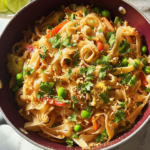
Vegetarian Pad Thai
- Total Time: 30 minutes
- Yield: 30 minutes. whether you're hosting a family dinner or craving something healthy yet satisfying, this recipe offers incredible nutritional benefits while keeping costs under $15 for four servings 1x
Description
A delicious and authentic vegetarian pad thai recipe featuring rice noodles, crispy tofu, and fresh vegetables in a perfectly balanced sweet, sour, and savory sauce. Ready in just 30 minutes!
Ingredients
- 8 oz Rice noodles
- 1 cup Firm tofu, cubed
- 1 cup Bell peppers, sliced
- 1 cup Carrots, julienned
- ½ cup Green onions, chopped
- 3 tbsp Tamarind paste
- 3 tbsp Low-sodium soy sauce
- 2 tbsp Lime juice, fresh
- 2 tbsp Brown sugar
- 1 tsp Chili powder
- ¼ cup Peanuts, chopped
- 1 cup Bean sprouts
Instructions
- Prepare Noodles: Soak rice noodles in hot water for 15 minutes until soft but still firm. Drain thoroughly and set aside.
- Cook Tofu: Heat oil in large pan over medium-high heat. Add cubed tofu and sauté for 5-7 minutes until golden brown on all sides.
- Add Vegetables: Add bell peppers and carrots to the pan. Stir-fry for 3-4 minutes until slightly softened but still crisp.
- Make Sauce: In a bowl, whisk together tamarind paste, soy sauce, lime juice, brown sugar, and chili powder until smooth.
- Combine Everything: Pour sauce over vegetables and tofu. Add drained noodles and gently toss for 2 minutes until evenly coated.
- Final Touch: Stir in bean sprouts and chopped peanuts just before serving. Serve immediately with lime wedges.
Notes
- Press tofu between paper towels for 10 minutes before cubing to remove excess moisture and achieve better browning
- Test noodle doneness by tasting – they should be tender but still have slight bite to prevent mushiness when stir-fried
- Prepare all ingredients before starting to cook since the actual cooking process moves quickly and requires constant attention
- Use high heat throughout cooking to achieve proper wok hei (breath of the wok) that gives authentic restaurant flavor
- Prep Time: 15 minutes
- Cook Time: 15 minutes
- Category: Main Course
- Method: Stir-frying
- Cuisine: Thai
Nutrition
- Serving Size: 1 serving (1/4 of recipe)
- Calories: 385 calories
- Sugar: 12g
- Sodium: 580mg
- Fat: 14g
- Saturated Fat: 2g
- Unsaturated Fat: 12g
- Trans Fat: 0g
- Carbohydrates: 58g
- Fiber: 5g
- Protein: 16g
- Cholesterol: 0mg
Keywords: vegetarian pad thai, thai noodles, vegetarian recipe, tofu pad thai, healthy asian food, quick dinner

